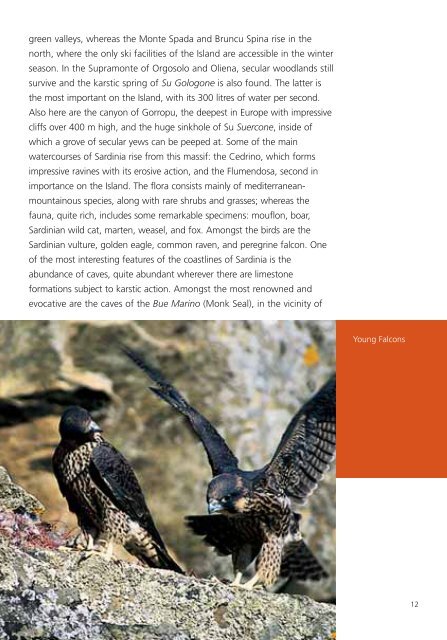You also want an ePaper? Increase the reach of your titles
YUMPU automatically turns print PDFs into web optimized ePapers that Google loves.
green valleys, whereas the Monte Spada and Bruncu Spina rise in the<br />
north, where the only ski facilities of the Island are accessible in the winter<br />
season. In the Supramonte of Orgosolo and Oliena, secular woodlands still<br />
survive and the karstic spring of Su Gologone is also found. The latter is<br />
the most important on the Island, with its 300 litres of water per second.<br />
Also here are the canyon of Gorropu, the deepest in Europe with impressive<br />
cliffs over 400 m high, and the huge sinkhole of Su Suercone, inside of<br />
which a grove of secular yews can be peeped at. Some of the main<br />
watercourses of Sardinia rise from this massif: the Cedrino, which forms<br />
impressive ravines with its erosive action, and the Flumendosa, second in<br />
importance on the Island. The flora consists mainly of mediterraneanmountainous<br />
species, along with rare shrubs and grasses; whereas the<br />
fauna, quite rich, includes some remarkable specimens: mouflon, boar,<br />
Sardinian wild cat, marten, weasel, and fox. Amongst the birds are the<br />
Sardinian vulture, golden eagle, common raven, and peregrine falcon. One<br />
of the most interesting features of the coastlines of Sardinia is the<br />
abundance of caves, quite abundant wherever there are limestone<br />
formations subject to karstic action. Amongst the most renowned and<br />
evocative are the caves of the Bue Marino (Monk Seal), in the vicinity of<br />
Young Falcons<br />
12
















